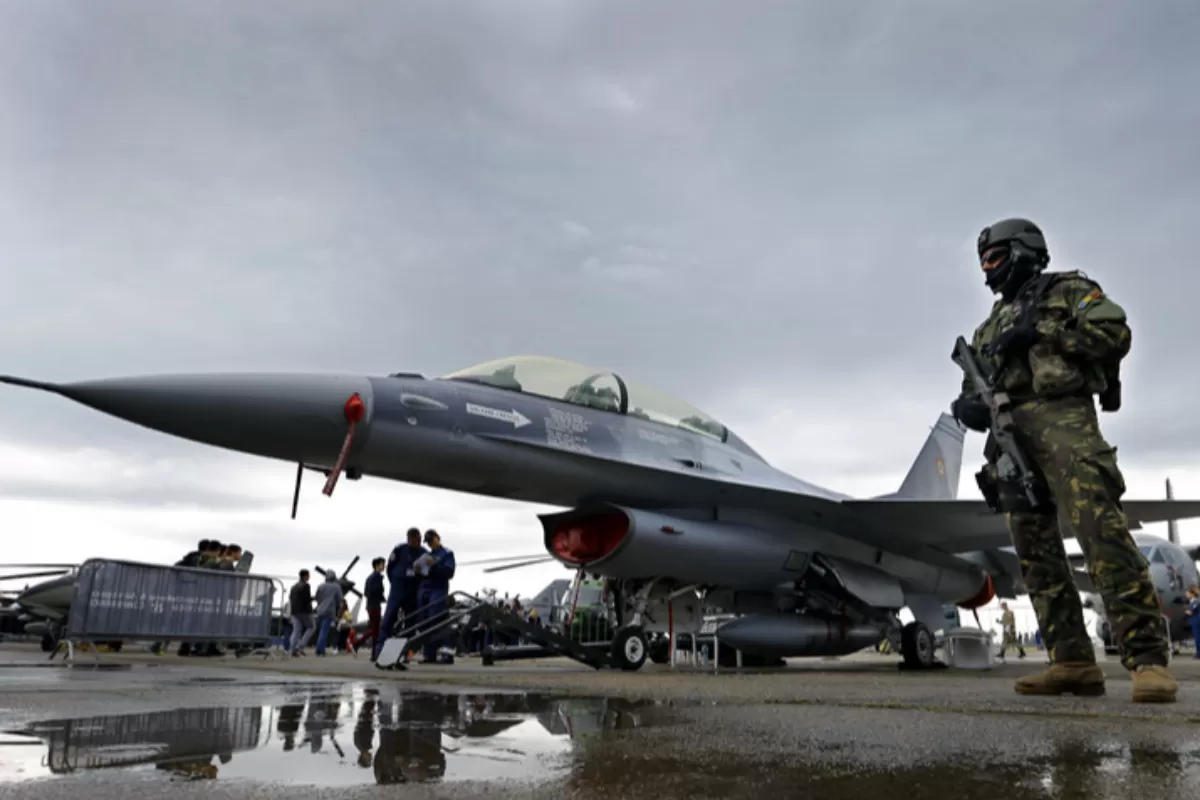
Romania has become a dumpster for the military equipment discarded by other NATO member states, which is illustrative of its servitude towards the Allies. This false narrative was prompted by AUR leaders and amplified by Sputnik.
NEWS: “AUR leaders have made bold statements regarding Romania’s policy of public procurement in the field of military technology. Although it was long suspected to represent a sort of tribute paid to our country’s “Euro-Atlantic partners”, this procurement was kept on the down-low by the Romanian political class, any criticism in this respect being considered dangerous, threatening to end political careers. The mere intervention of the two co-presidents of Romania’s number one opposition party, who made a clear and firm stand, signals major changes in Romanian politics. […] What we ask is a fair deal that would involve compensation under the offset mechanism, to the extent that is possible. We want to see military equipment manufactured in Romania, by Romanian workers. We want 80% of the funds invested to return to the country!” […] “We are too poor to afford cheap technology. We could buy 10 new jets instead of 32 old ones, and we could have obtained a much better price”, the co-president of AUR, Senator Claudiu Târziu has said”, Sputnik writes.
NARRATIVES: 1. Romania is a second-tier NATO state that “pays tribute” by purchasing second-rate military equipment. 2. Romania’s military industry gets no benefits from purchasing second-hand multirole aircraft. 3. Romania could have purchased fewer fighter jets, but new.
BACKGROUND: At the end of last week, Romania announced it is planning to purchase 32 F-16 multirole fighter jets from the Norwegian Army in order to have several squadrons at its disposal, capable of ensuring of security of national airspace, and at the same time NATO airspace on its eastern flank.
This round of procurement, added to the F-16s previously purchased from Portugal, is part of a wider effort aimed at purchasing top-tier jets for the Romanian Air Force, whose end-goal, to be achieved by the end of 2030, is to obtain access to F-35 5th-generation US fighters, which many consider to be the top of the line in the field of military aviation right now, as well as the foundation of NATO’s air forces for the next few decades.
Before being able to have an air fleet of F-35 jets of its own, Romania must first develop the military capability, which is a key element in the process of procurement, whereby the real price of the aircraft is calculated. Capability means, among other things, airports capable of hosting specific aircraft, silos, maintenance, and the training of specialized staff. The existent capability entails lower costs when additional aircraft are purchased, as well as smoother transition to new platforms. The current stage in Romania’s process of procuring new military technology, where its air fleet consists of F-16 fighter jets, is therefore one of transition, paving the way for the purchase of F-35 fighters.
The modernization of Romania’s Air Force and procuring NATO-standard equipment is a prerequisite to Romania’s NATO accession, as well as to the defense of its own territory, although it becomes all the more important in the context of Russia’s growing regional aggression in recent years.
Russia’s growing militarization of the Black Sea region and its build-up on the Ukrainian border have put NATO on its guard, especially member states on the eastern flank as well as Black Sea riparian states, who feel threatened by Moscow’s increased military upsurge.
East-European countries are closely monitoring the movement of Russian troops in the area, particularly after the 2014 annexation of the Crimean Peninsula by “little green men” controlled by Moscow. Therefore, NATO has intensified its internal processes to get each member state to earmark 2% of its GDP to defense spending in order to be able to cope with possible threats coming either from Russia, or from other parts of the world.
PURPOSE: To encourage anti-NATO sentiment in Romania, and by extension anti-EU and anti-Western attitudes in general.
WHY THE NARRATIVES ARE FALSE: Romania is a full member of NATO, and Article 5 in the North Atlantic Alliance Treaty on collective defense (the so-called ‘musketeer clause’) stipulates that all member states pledge to intervene in case any of the allies is under attack. Therefore, any argument invoking “second-tier” members or “dumpsters” is baseless.
Furthermore, developed states are helping smaller states within NATO. Air policing missions, for instance, which certain states undertake to the benefit of others, are evidence of that, demonstrating how “Article 5” works in times of peace. In the absence of a state-of-the-art air fleet, Romania for years has benefited from air protection from NATO states as part of an air mission conducted by rotation at the air base in Mihail Kogălniceanu, Constanța County.
The Norwegian fleet of 32 multirole aircraft will cost merely 365 million Euro (compared to the 628 million paid for the purchase of the 17 fighter jets from Portugal several years ago). Another 100 million Euro will be invested in refitting the aircraft at Aerostar Bacău, which contradicts the statement of the co-president of AUR, George Simion, who argued that the investment will never return to Romania. Moreover, the aircraft from Norway got a susbtantial upgrade in 2001.
The 32 aircraft Romania will be purchasing from Norway are mark M6.5.2, which is superior to the other aircraft already owned by the Romanian Air Force, which are mark M5.2R. Romania’s 17 aircraft are soon expected to be upgraded at Aerostar to mark M.6.X.
According to Defense Minister, Vasile Dâncu, the fighters are expected to be used for another 10 years, which means they have not reached the end of their service life. The modernization of the new fighter jets will largely by performed by the Norwegian Army at Aerostar Bacău over the next two years. Moreover, all systems will subsequently be upgraded in the United States as well.
“Fighter jets are not cars. Their service life is renewed with each upgrade, unlike other pieces of military technology. Then, we have 100 million Euro to modernize all our systems, and this process will be performed in the United States, due to its compatibility with NATO”, Dâncu told Radio România Actualități.
Moreover, the 10-year service lifetime will allow Romania to safely transition to F-35 fighter jets.
“Therefore, these aircraft will make the transition from the fourth generation of fighter jets to 5th-generation F-35s, which many see as the aircraft of the future. A great number of the components of these jets, although they are second-hand, were also used to build this state-of-the-art aircraft, F-35, which is currently in construction. This will happen over the course of the next decade, probably after 2030, we will purchase this type of aircraft, which is the highest-standard model of its class and a dream come true for pilots”, Minister Dâncu said.
The decision to strengthen Romania’s air fleet by purchasing aircraft from Norway is part of Romania’s wider strategy aimed at improving its military capabilities. This summer, the Air Force chief of staff, Viorel Pană, said that Romania is planning to procure 5th-generation aircraft starting 2030. He gave assurances that, by then, “Romania’s transition defense capability will consist of F-16”, whereas the authorities are expected to discuss the purchase of another two squadrons over the next period.
Regarding the statements of AUR’s co-president, Claudiu Târziu, who claimed that “Romania could have purchased 10 new jets instead of 32 old ones”, we can look at Bulgaria for instance, a country that purchased eight F-16 new fighter jets for 1.7 billion USD after signing a deal with the US government in July 2019. This is tantamount to 212 million dollars per fighter jet, compared to 11 million dollars per second-hand jet (without the technology upgrade) that Romania paid to buy the F-16s from Norway.
The subordination of smaller countries that are part of various alliances (whether it’s the EU or NATO) is one of the main narratives of Russian propaganda.
GRAIN OF TRUTH: Romania will purchase 32 second-hand F-16 fighter jets from Norway, a country that will transition to F-35 fighters.
Check sources:


